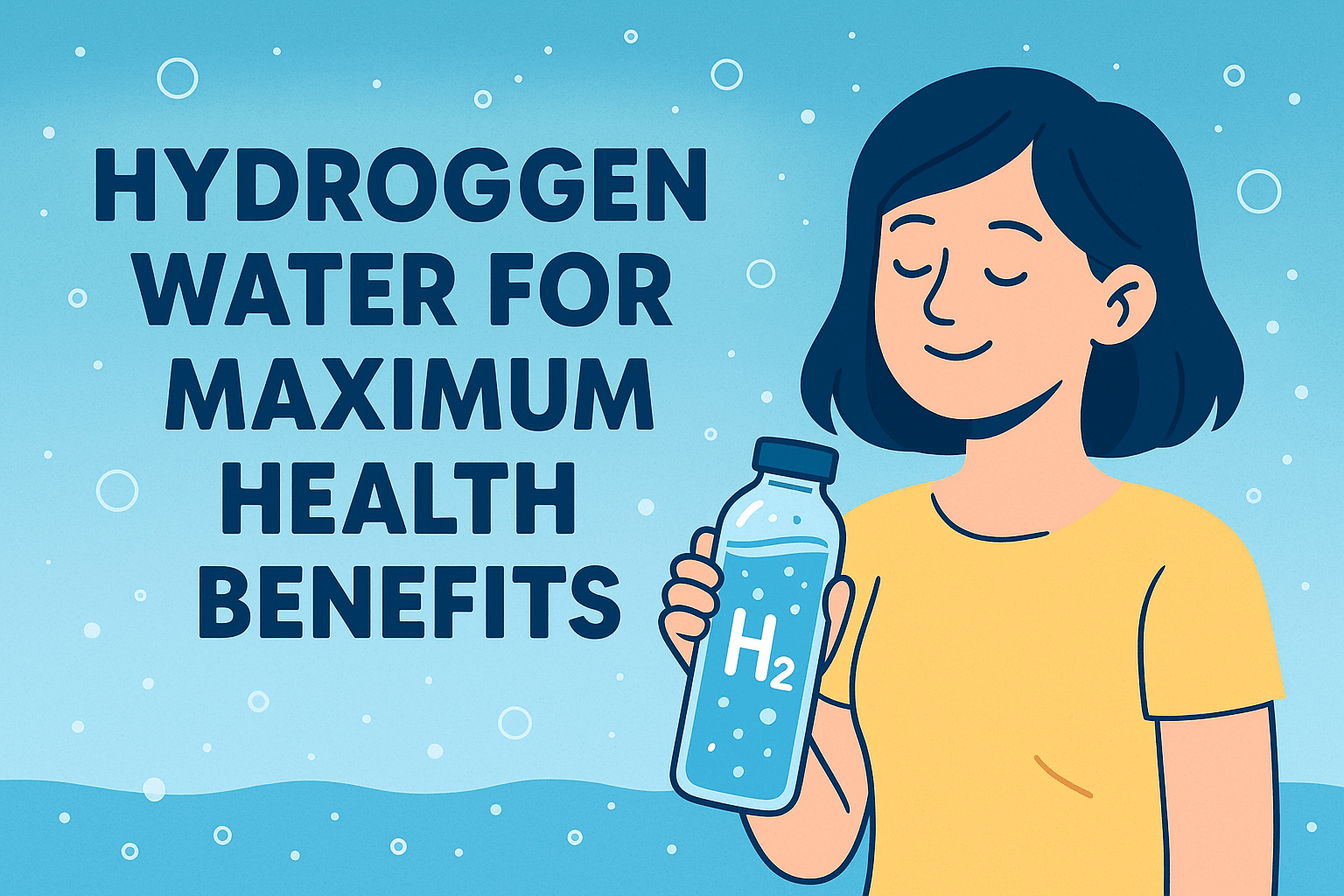
How to Use Hydrogen Water: Timing, Dosage & Bottle Tips
A simple, step-by-step guide to drinking hydrogen water the right way—when to drink it, how much, and how to keep hydrogen from escaping.

Using hydrogen water is straightforward: drink it fresh and store it smartly. Most people try H₂ for potential wellness benefits like recovery support and reduced oxidative stress.
New to H₂? Start with our Hydrogen Water: The Ultimate Guide (2025) and the Hydrogen Water FAQ.
Key Takeaways
- Hydrogen water bottles use electrolysis to add H₂ in minutes.
- Drink within ~30 minutes of production for peak levels (why timing matters).
- Use clean water, tight seals, cold storage; maintain devices weekly.
Fundamentals of Using Hydrogen Water
Hydrogen water is regular water infused with dissolved molecular hydrogen (H₂). Bottles and machines create H₂ via electrolysis, while magnesium tablets generate H₂ through a simple reaction (how H₂ water is made). Because hydrogen is tiny and diffuses quickly, freshness and storage are critical—see How long H₂ stays in water.
Potential Benefits & How It Works
- May help reduce oxidative stress (anti-aging overview)
- Support post-workout recovery (recovery guide)
- Potential energy & hydration support (for athletes)
- Early research on skin and metabolic markers (skin benefits)
Deep dive: Hydrogen water benefits
H₂ is a selective antioxidant—it can target the most reactive species while leaving helpful signaling intact. Molecules are very small, so they diffuse rapidly—but that also means they escape quickly if water is left open or warm.
Recommended Dosage & Timing
Common daily use is 1–3 glasses (8–12 oz each). Drink soon after generation to keep ppm high.
| When | Why it helps |
|---|---|
| Morning | Start the day with fresh H₂ |
| Before exercise | May support performance |
| After exercise | Supports recovery |
| Between meals | Helps absorption |
New to H₂? Start with one glass daily and increase as you like. See also using H₂ for maximum benefits.
Safety & Simple Best Practices
- Generally well tolerated; a few people notice brief digestive changes at first.
- Use clean, filtered water in devices.
- Check with your clinician if you manage conditions or take medications.
Learn more: brain benefits · inflammation
Device care matters: keep electrodes clean and follow the maker’s maintenance schedule so your ppm stays consistent.
Practical Methods for Incorporating Hydrogen Water
Three main approaches: tablets (magnesium reaction), electrolysis devices (bottles/countertop/under-sink), and smart storage to preserve H₂ after generation. If you’re choosing between formats, compare bottle vs. machine and see our buying guide.
Hydrogen Tablets: Prep & Use
- Drop 1 tablet into 12–16 oz room-temp water.
- Wait until fizzing stops (≈1–2 minutes), then drink.
- Use filtered/purified water; store tablets dry & sealed.
Tablets are portable and fast. Many create slightly alkaline water as a by-product. Start with one tablet per day to gauge tolerance.
Compare with devices: hydrogen vs. alkaline machines
Hydrogen Generators & Bottles
- Fill with clean, filtered water.
- Start the electrolysis cycle (typically 3–10 minutes).
- Drink immediately or store properly (see storage below).
Portable: Echo Go · Premium flask: Echo Flask
For home capacity, consider countertop/under-sink systems for steady access: Echo H2® · Echo Flow · Best machines of 2025
Hydrogen Concentration & Water Quality
- Low TDS (<300 ppm) water works best.
- Neutral pH (≈6.5–8.5).
- Free of chlorine/heavy metals.
Quality water in = more consistent ppm out. Mineral buildup can reduce performance—clean your device per maker guidance.
Storage: Keep the Hydrogen You Made
- Use glass or quality aluminum with tight seals.
- Fill to the top (less headspace).
- Refrigerate to slow off-gassing.
- Once opened, drink promptly (H₂ dissipates fast).
More tips: How long H₂ stays in water · How to store hydrogen water
Avoid freezing (can damage seals) and minimize agitation during transport. For hours-long retention, keep containers cold and sealed until you’re ready to drink.
Frequently Asked Questions


